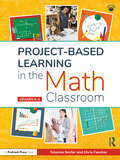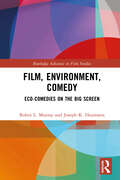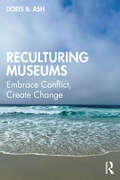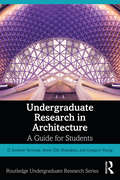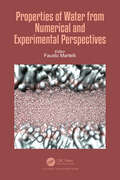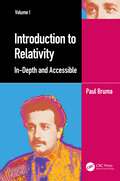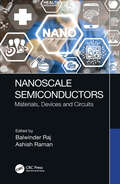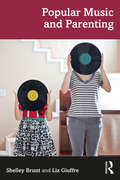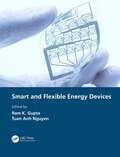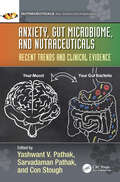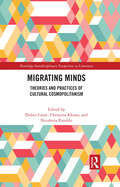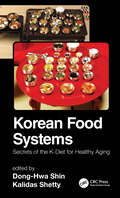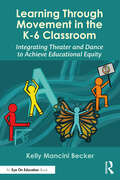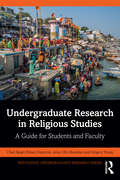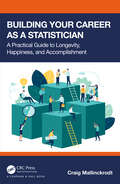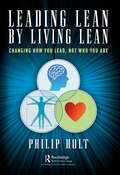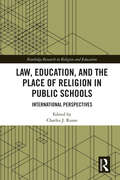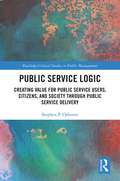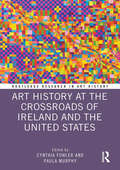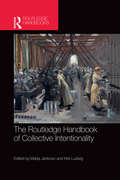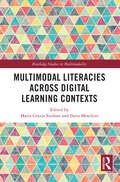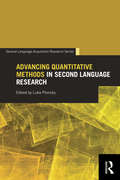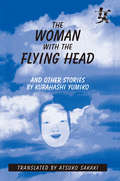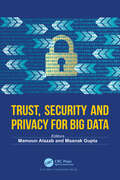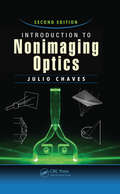- Table View
- List View
Project-Based Learning in the Math Classroom: Grades K-2
by Telannia Norfar Chris FancherProject-Based Learning in the Math Classroom: Grades K–2 explains how to keep inquiry at the heart of mathematics teaching in the elementary grades. Helping teachers integrate other subjects into the math classroom, this book outlines in-depth tasks, projects and routines to support Project-Based Learning (PBL). Featuring helpful tips for creating PBL units, alongside models and strategies that can be implemented immediately, Project-Based Learning in the Math Classroom: Grades K–2 understands that teaching in a project-based environment means using great teaching practices. The authors impart strategies that assist teachers in planning standards-based lessons, encouraging wonder and curiosity, providing a safe environment where mistakes can occur, and giving students opportunities for revision and reflection.
Film, Environment, Comedy: Eco-Comedies on the Big Screen (Routledge Advances in Film Studies)
by Robin L. Murray Joseph K. HeumannThis book explores the transformative power of comedy to help connect a wider audience to films that explore environmental concerns and issues. This book offers a space in which to explore the complex ways environmental comedies present their eco-arguments. With an organizational structure that reveals the evolution of both eco-comedy films and theoretical approaches, this book project aims to fill a gap in ecocinema scholarship. It does so by exploring three sections arranged to highlight the breadth of eco-comedy: I. Comic Genres and the Green World: Pastoral, Anti-Pastoral, and Post-Pastoral Visions; II. Laughter, Eco-Heroes, and Evolutionary Narratives of Consumption; and III. Environmental Nostalgia, Fuel, and the Carnivalesque. Examining everything from Hollywood classics, Oscar winners, and animation to independent and international films, Murray and Heumann exemplify how the use of comedy can expose and amplify environmental issues to a wider audience than more traditional ecocinema genres and can help provide a path towards positive action and change.Ideal for students and scholars of film studies, ecocriticism, and environmental studies, especially those with a particular interest in ecocinema and/or ecocritical readings of popular films.
Reculturing Museums: Embrace Conflict, Create Change
by Doris B. AshReculturing Museums takes a unified sociocultural theoretical approach to analyze the many conflicts museums experience in the 21st century. Embracing conflict, Ash asks: What can practitioners and researchers do to create the change they want to see when old systems remain stubbornly in place?Using a unified sociocultural, cultural-historical, activity-theoretical approach to analyzing historically bound conflicts that plague museums, each chapter is organized around a central contradiction, including finances ("Who will pay for museums?"), demographic shifts ("Who will come to museums?"), the roles of narratives ("Whose story is it?"), ownership of objects ("Who owns the artifact?"), and learning and teaching ("What is learning and how can we teach equitably?"). The reculturing stance taken by Ash promotes social justice and equity, ‘making change’ first, within museums, called inreach, rather than outside the museum, called outreach; challenges existing norms; is sensitive to neoliberal and deficit ideologies; and pays attention to the structure agency dialectic.Reculturing Museums will be essential reading for academics, students, museum practitioners, educational researchers, and others who care about museums and want to ensure that all people have equal access to the activities, objects, and ideas residing in them.
Undergraduate Research in Architecture: A Guide for Students (Routledge Undergraduate Research Series)
by D. Andrew Vernooy Jenny Olin Shanahan Gregory YoungUndergraduate Research in Architecture: A Guide for Students supplies tools for scaffolding research skills, with examples of undergraduate research activities and case studies on projects in the various areas of architecture study. Undergraduate research has become a common degree requirement in some disciplines and is growing rapidly. Many undergraduate activities in music have components that could be combined into compelling undergraduate research projects, either in the required curriculum, as part of existing courses, or in capstone courses centered on undergraduate research.Following an overview chapter, the next seven chapters cover research skills including literature reviews, choosing topics, formulating questions, citing sources, disseminating results, and working with data and human subjects. A wide variety of sub-disciplines follow in the remaining chapters, with sample project ideas from each as well as undergraduate research conference abstracts. The final chapter is an annotated guide to online resources. Included are some inspirational quotations concerning architecture’s commitment to research, and some examples of professional research that support the focus of the chapter. All chapters end with relevant questions for discussion.
Properties of Water from Numerical and Experimental Perspectives
by Fausto MartelliAs the most important liquid in our life and one of the most abundant molecules in the universe, water is the least understood substance with a very rich phase diagram (at least 18 crystalline forms and two liquids) and more that 60 dynamical/thermodynamic anomalies whose origins are still under debate. Properties of Water from Numerical and Experimental Perspectives gathers together leading scientists and experts in the field of water. By merging the theoretical/computational point of view with experimental approaches, it presents a state-of-the-art description of the properties of water, enlightening the source of the anomalies of water and describing how such anomalies actively affect the functioning of biological substances.
Introduction to Relativity Volume I: In-Depth and Accessible
by Paul BrumaE=mc² is known as the most famous but least understood equation in physics. This two-volume textbook illuminates this equation and much more through clear and detailed explanations, new demonstrations, a more physical approach, and a deep analysis of the concepts and postulates of Relativity. The first part of Volume I contains the whole Special Relativity theory with rigorous and complete demonstrations. The second part presents the main principles of General Relativity, including detailed explanations of the bending of light in the neighborhood of great masses, the gravitational time dilatation, and the principles leading to the famous equation of General Relativity: D(g) = k .T. The most important cosmological predictions are then described: the Big Bang theory, black holes, and gravitational waves. Plentiful historical information is contained throughout the book, particularly in an ending chapter depicting the scientific and epistemological revolution brought about by the theory of Relativity.Both volumes place an emphasis on the physical aspects of Relativity to aid the reader’s understanding and contain numerous questions and problems (147 in total). Solutions are given in a highly detailed manner to provide the maximum benefit to students. This textbook fills a gap in the literature by drawing out the physical aspects and consequences of Relativity, which are otherwise often second place to the mathematical aspects. Its concrete focus on physics allows students to gain a full understanding of the underlying concepts and cornerstones of Relativity.
Nanoscale Semiconductors: Materials, Devices and Circuits
by Balwinder Raj Ashish RamanThis reference text discusses conduction mechanism, structure construction, operation, performance evaluation and applications of nanoscale semiconductor materials and devices in VLSI circuits design.The text explains nano materials, devices, analysis of its design parameters to meet the sub-nano-regime challenges for CMOS devices. It discusses important topics including memory design and testing, fin field-effect transistor (FinFET), tunnel field-effect transistor (TFET) for sensors design, carbon nanotube field-effect transistor (CNTFET) for memory design, nanowire and nanoribbons, nano devices based low-power-circuit design, and microelectromechanical systems (MEMS) design.The book discusses nanoscale semiconductor materials, device models, and circuit design covers nanoscale semiconductor device structures and modeling discusses novel nano-semiconductor devices such as FinFET, CNTFET, and Nanowire covers power dissipation and reduction techniques Discussing innovative nanoscale semiconductor device structures and modeling, this text will be useful for graduate students, and academic researchers in diverse areas such as electrical engineering, electronics and communication engineering, nanoscience, and nanotechnology. It covers nano devices based low-power-circuit design, nanoscale devices based digital VLSI circuits, and novel devices based analog VLSI circuits design.
Popular Music and Parenting
by Shelley Brunt Liz GiuffrePopular Music and Parenting explores the culture of popular music as a shared experience between parents, carers and young children. Offering a critical overview of this topic from a popular music studies perspective, this book expands our assumptions about how young audiences and caregivers engage with music together. Using both case studies and wider analysis, the authors examine music listening and participation between children and parents in both domestic and public settings, ranging across children's music media, digital streaming, live concerts, formal and informal popular music education, music merchandising and song lyrics.Placing young children’s musical engagement in the context of the music industry, changing media technologies, and popular culture, Popular Music and Parenting paints a richly interdisciplinary picture of the intersection of popular music with the parent–child relationship.
Smart and Flexible Energy Devices
by Ram K. GuptaThe scientific community and industry have seen tremendous progress in efficient energy production and storage in the last few years. With the advancement in technology, new devices require high-performance, stretchable, bendable, and twistable energy sources, which can be integrated into next-generation wearable, compact, and portable electronics for medical, military, and civilian applications.Smart and Flexible Energy Devices examines the materials, basic working principles, and state-of-the-art progress of flexible devices like fuel cells, solar cells, batteries, and supercapacitors. Covering the synthesis approaches for advanced energy materials in flexible devices and fabrications and fundamental design concepts of flexible energy devices, such as fuel cells, solar cells, batteries, and supercapacitors, top author teams explore how newer materials with advanced properties are used to fabricate the energy devices to meet the future demand for flexible electronics.Additional features include:• Addressing the materials, technologies, and challenges of various flexible energy devices under one cover• Emphasizing the future demand and challenges of the field• Considering all flexible energy types, such as fuel cells, solar cells, batteries, and supercapacitors• Suitability for undergraduate and postgraduate students of material science and energy programsThis is a valuable resource for academics and industry professionals working in the field of energy materials, nanotechnology, and energy devices.
Anxiety, Gut Microbiome, and Nutraceuticals: Recent Trends and Clinical Evidence (Nutraceuticals)
by Yashwant V. Pathak, Sarvadaman Pathak, and Con StoughHealthy gut function is associated with normal central nervous system (CNS) function. Hormones, neurotransmitters, and immunological factors released from the gut are known to send signals to the brain either directly or via autonomic neurons. Recently, studies have emerged focusing on variations in the microbiome and the effect on various CNS disorders, including, but not limited to anxiety, depressive disorders, schizophrenia, and autism. Anxiety, Gut Microbiome, and Nutraceuticals: Recent Trends and Clinical Evidence is focused on understanding the role of gut microbiomes on anxiety and how it can be treated using various nutraceuticals. It covers recent trends and clinical evidence in application of nutraceuticals in treating anxiety and related disorders.Key Features Explains various factors related to anxiety and anxiety-related disorders including pathophysiological and pharmacological factors Discusses the pharmacology behind anxiety and related disorders Explores the role of gut microbiota and its relationship with anxiety and related disorders Describes different nutraceuticals and classes of nutraceuticals which can be useful to treat anxiety and related disorders In recent years, there has been an increased interest in nutraceuticals and their applications in treating many diseases and disorders. The market has grown tremendously, and this book focuses on the many clinical studies reporting on the usefulness of nutraceuticals in treating such health conditions.
Migrating Minds: Theories and Practices of Cultural Cosmopolitanism (Routledge Interdisciplinary Perspectives on Literature)
by Didier CosteAwarded the 2023 "René Wellek Prize for the Best Edited Essay Collection" by the American Comparative Literature Association, Migrating Minds contributes to the prominent interdisciplinary domain of Cosmopolitan Studies with 20 innovative essays by humanities scholars from all over the world that re-examine theories and practices of cosmopolitanism from a variety of perspectives. The volume satisfies the need for a stronger involvement of Comparative and World Literatures and Cultures, Translation, and Education Theories in this crucial debate, and also proposes an experimental way to explore in depth the necessity of a cosmopolitan method as well as the riches of cosmopolitan representations.The essays follow a logical progression from the situated philosophical and political foundations of the debate to interdisciplinary propositions for a pedagogy of cosmopolitanism through studies of modern and contemporary cosmopolitan cultural practices in literature and the arts and the concurrent analysis of prototypes of cosmopolitan identities. This trajectory allows readers to appreciate new historical, theoretical, aesthetic, and practical implications of cosmopolitanism that pertain to multiple genres and media, under different modes of production and reception. In the deterritorialized landscape of Migrating Minds, mental and sentimental mobility, rather than the legacy of place, is the key to an efficient, humanist response to deadening globalization.
Korean Food Systems: Secrets of the K-Diet for Healthy Aging
by Dong-Hwa Shin Kalidas ShettyThe Republic of Korea (ROK) is projected by 2030 to have the longest living population compared to any nation on earth. A girl born in the ROK in 2030 will live up to 90.8 years on average. What are the reasons for this improvement in longevity?Among many insights for longevity among the people of the ROK is the diverse Korean ethnic diet with roots in a traditional diet that has been preserved for centuries. Korean Food Systems: Secrets of the K-Diet for Healthy Aging provides an integrated and holistic approach towards the understanding how food systems of the ROK and experiences of the last 60-plus years has been sustained by traditions and ecology integrated with contemporary advances in technology and the economy.Key Features: Discusses the rationale and basis of food systems, traditions of healthy eating, and healthy aging in the Korean population and why by 2030 they will be the longest living population on the planet Reflects on the role of historical, cultural, and traditional food and dietary concepts of Korea and how they have influenced healthy eating habits, contributing to health and longevity Discusses the relevance of the modern genetic concepts of nutrigenomics and epigenetics, metabolic concepts such as circulation, and food concepts such as fermented and functional foods in advancing healthy food concepts and longevity Provides insights how a large population can advance an integrated holistic food-based approach to longevity and wellness As a collaboration between various outstanding authors, the insights from this book can provide global examples to align similar approaches and policies in other countries in different ecologies of planet earth.
Learning Through Movement in the K-6 Classroom: Integrating Theater and Dance to Achieve Educational Equity
by Kelly Mancini BeckerThis book offers a creative and practical guide for K-6 teachers on how to effectively integrate movement into the curriculum to increase student engagement, deepen learning, improve retention, and get kids moving during the school day.Chapters offer concrete ideas for integrating creative movement and theater into subjects such as math, science, literacy, and social studies. Drawing on two decades of experience, Dr. Becker outlines key skills, offers rich examples, and provides adaptable and flexible classroom tested lesson plans that align with Common Core Standards, the NGSS, C3 Social Studies Standards, and the National Core Arts Standards. Activities are grounded in arts integration, which is steadily gaining interest in school reform as an effective teaching strategy that increases student outcomes academically and socially—particularly effective for students who have traditionally been marginalized.This book will benefit practicing educators who want to invigorate their practice, preservice teachers who want to expand their toolkit, and school leaders looking to employ policies that support movement and arts during the school day. Jump in and get your kids Learning Through Movement and see how active and engaging learning can be!
Undergraduate Research in Religious Studies: A Guide for Students and Faculty (Routledge Undergraduate Research Series)
by Ruben Dupertuis Chad Spigel Jenny Olin Shanahan Gregory YoungUndergraduate Research in Religious Studies provides students and faculty with an invaluable guide to conducting research projects across all areas in the study of religion. With an emphasis on student-faculty collaboration, this concise book addresses the key areas, methods, and practical issues to inform the practice of original undergraduate research across a wide range of subdisciplines.In fourteen short chapters, the authors lay out the stages of the research process and different research methodologies; discuss approaches, examples, and ethical issues particular to religious studies; and address the unique value and challenges of collaborative research with undergraduate students, including case studies of student-faculty collaboration. Designed to be utilized by students and faculty as both a textbook and reference, this book offers an essential resource for all those engaging in or leading undergraduate research across religious studies.
Building Your Career as a Statistician: A Practical Guide to Longevity, Happiness, and Accomplishment
by Craig MallinckrodtThis book is intended for anyone who is considering a career in statistics or a related field, or those at any point in their career with sufficient work time remaining such that investing in additional learning could be beneficial. As such, the book would be suitable for anyone pursing an MS or PhD in statistics or those already working in statistics. The book focuses on the non-statistical aspects of being a statistician that are crucial for success. These factors include 1) productivity and prioritization, 2) innovation and creativity, 3) communication, 4) critical thinking and decisions under uncertainty, 5) influence and leadership, 6) working relationships, and 7) career planning and continued learning. Each of these chapters includes sections on foundational principles and a section on putting those principles into practice. Connections between these individual skills are emphasized such that the reader can appreciate how the skills build upon each other leading to a whole that is greater than the sum of its parts. By including the individual perspectives from other experts on the fundamental principles and their application, readers will have a well-rounded view on how to build upon and fully leverage their technical skills in statistics. The primary audience for the book is large and diverse. It will be useful for self-study by virtually any statistician, but could also be used as a text in a graduate program that includes a course on careers and career development.Key Features: Takes principles proven to be useful in other settings and applies them to statisticians and statistical settings. Focused Concise Accessible to all levels, from grad students to mid-later career statisticians.
Leading Lean by Living Lean: Changing How You Lead, Not Who You Are
by Philip HoltIn Leading Lean by Living Lean, Philip Holt details and explains what is probably the most important part of becoming a Lean Leader -- living and practicing what you preach. To do this you must believe in what you’re doing, understand what it means and what you need to do, and do it every day. The author, through his engineering background, has fully embraced the Plan-Do-Check-Act (PDCA) model of Deming / Shewhart but has adapted David Bovis’ Believe-Think-Feel-Act (BTFA) model to understand why logic and facts are very often not the principal players in the game of change. In this book, Holt author describes how you can take both the PDCA and BTFA models into account and has sectioned the book into three prime parts: 1. Head -- How you learn and understand the Lean principles and their application. 2. Hands -- How you practice Lean Leadership daily. 3. Heart -- How you internalize and believe in Lean Leadership. Through this book, you, the Lean practitioner, whether aspiring or experienced, will have everything that you need to “lead it,” “do it,” and “live it.” The nature of this book is more “why to” than “how to” – the author knows that he cannot tell you how to lead, do, or live Lean; he can only explain why it is so important and share his knowledge, experiences, failures, and successes. This book isn’t so much a self-help book as a self-reflection book and it can point you in the proper direction, but… the book won’t change you; only you can change you! Essentially, with this book, the author wants those who think of Lean as a toolkit, who believe that Lean can be project managed, or who argue about Lean versus Six Sigma and misunderstand the fundamental depth of impact that true Lean Leadership has on an organization to be disabused of any or all of those notions. This book is aimed at those leaders who seek to experience the full transformative effects of Lean in their organizations and want to practice it at the principle level of deployment. Holt's aim is to help business leaders enhance who they are by changing what they do and the way that they do it
Law, Education, and the Place of Religion in Public Schools: International Perspectives (Routledge Research in Religion and Education)
by Charles J. RussoThis text presents a comparative, cross-cultural analysis of the legal status of religion in public education in eighteen different nations while offering recommendations for the future improvement of religious education in public schools. Offering rich, analytical insights from a range of renowned scholars with expertise in law, education, and religion, this volume provides detailed consideration of legal complexities impacting the place of religion and religious education in public education. The volume pays attention to issues of national and international relevance including the separation of the church and state; public funding of religious education; the accommodation of students’ devotional needs; and compulsory religious education. The volume thus highlights the increasingly complex interplay of religion, law, and education in diverse educational settings and cultures across developing and developed nations.Providing a valuable contribution to the field of religious secondary education research, this volume will be of interest to researchers, academics, and educators with an interest in religion and law, international and comparative education, and those involved with educational policy at all levels. Those more broadly interested in moral and values education will also benefit from the discussions the book contains.
Public Service Logic: Creating Value for Public Service Users, Citizens, and Society Through Public Service Delivery (ISSN)
by Stephen OsborneThis book is based upon and extends the theoretical and empirical work of the author over the last decade. It integrates material deriving from his previous conceptual and empirical work in this field, together with new empirical evidence from emerging research. Public Service Logic challenges the product-dominant assumptions of the New Public Management (NPM) about the nature and management of public service delivery. Whilst the NPM has led to some important developments in public management, it has also had significant limitations and weaknesses. The book presents an alternative to this, as a framework for the future delivery and reform of public services globally. It draws upon the extant literature in the field of service management to argue for a Public Service Logic (PSL) for the delivery of public services. This situates public service delivery within the vibrant and influential field of service-dominant research and theory. It argues that effective public service management requires both that these services are understood as services not as products and that, consequently, public service management requires a focus on value creation as its over-arching rationale. The book presents a major new framework of value creation for public service delivery as a basis for public service reform, explores the role of service managers and staff and of citizens and service users in this value creation process, and evaluates the implications of this new framework for both the strategic and operational management of public service delivery, their performance management and the development and innovation of new forms of public services. It will be of interest to researchers and students in the fields of public management and public administration, as well as to policy makers and public service managers.
Art History at the Crossroads of Ireland and the United States (Routledge Research in Art History)
by Cynthia Fowler Paula MurphyTaking the visual arts as its focus, this anthology explores aspects of cultural exchange between Ireland and the United States. Art historians from both sides of the Atlantic examine the work of artists, art critics and art promoters. Through a close study of selected paintings and sculptures, photography and exhibitions from the nineteenth century to the present, the depth of the relationship between the two countries, as well as its complexity, is revealed. The book is intended for all who are interested in Irish/American interconnectedness and will be of particular interest to scholars and students of art history, visual culture, history, Irish studies and American studies.
The Routledge Handbook of Collective Intentionality (Routledge Handbooks in Philosophy)
by Marija Jankovic Kirk LudwigThe Routledge Handbook of Collective Intentionality provides a wide-ranging survey of topics in a rapidly expanding area of interdisciplinary research. It consists of 36 chapters, written exclusively for this volume, by an international team of experts. What is distinctive about the study of collective intentionality within the broader study of social interactions and structures is its focus on the conceptual and psychological features of joint or shared actions and attitudes, and their implications for the nature of social groups and their functioning. This Handbook fully captures this distinctive nature of the field and how it subsumes the study of collective action, responsibility, reasoning, thought, intention, emotion, phenomenology, decision-making, knowledge, trust, rationality, cooperation, competition, and related issues, as well as how these underpin social practices, organizations, conventions, institutions and social ontology. Like the field, the Handbook is interdisciplinary, drawing on research in philosophy, cognitive science, linguistics, legal theory, anthropology, sociology, computer science, psychology, economics, and political science. Finally, the Handbook promotes several specific goals: (1) it provides an important resource for students and researchers interested in collective intentionality; (2) it integrates work across disciplines and areas of research as it helps to define the shape and scope of an emerging area of research; (3) it advances the study of collective intentionality.
Multimodal Literacies Across Digital Learning Contexts (Routledge Studies in Multimodality)
by Maria Grazia Sindoni and Ilaria MoschiniThis collection critically considers the question of how learning and teaching should be conceived, understood, and approached in light of the changing nature of learning scenarios and new pedagogies in this current age of multimodal digital texts, practices, and communities.The book takes the concept of digital artifacts as being composed of multiple meaning-making semiotic resources, such as visuals, music, and design, as its point of departure to explore how diverse communities interact with these tools and develop and explore their understanding of digital practices in learning contexts. The first section of the volume examines different case studies in which involved participants learn to grapple with the introduction of digital tools for learning in children’s early years of schooling. The second section extends the focus to secondary and higher education settings as digital learning tools grow more complex as do students, parents, and teachers’ interactions with them and the subsequent need for new pedagogies to rethink these multimodal artifacts. A final section reflects on the implications of new multimodal tools, technologies, and pedagogies for teachers, such as on teacher training and community building among educators.In its in-depth look at multimodal approaches to learning as meaning-making in a digital world, this book will be of interest to students and scholars in multimodality, English language teaching, digital communication, and education.
Advancing Quantitative Methods in Second Language Research (ISSN)
by Luke PlonskyAdvancing Quantitative Methods in Second Language Research is the first hands-on guide to conducting advanced research methods in the fields of applied linguistics and second language studies. While a number of texts discuss basic quantitative research methodology, none focus exclusively on providing coverage of alternative advanced statistical procedures in second language studies from a practical approach. The text is bookended by discussions of these advanced procedures in the larger context of second language studies, debating their strengths, weaknesses, and potential for further research; the remaining chapters are how-to sections, each chapter following the same organization, on a wide variety of advanced research methods. By offering much-needed coverage on advanced statistical concepts and procedures, with an eye toward real-world implementation, Advancing Quantitative Methods in Second Language Research enhances the methodological repertoire of graduate students and researchers in applied linguistics and second language studies.For additional content, visit: http://oak.ucc.nau.edu/ldp3/AQMSLR.html
The Woman with the Flying Head and Other Stories
by Kurahashi Yumiko Atsuko SakakiThis is an English-language anthology dedicated to the short stories of Kurahashi Yumiko (1935-), a Japanese novelist of profound intellectual powers. The eleven stories included in this volume suggest the breadth of the author's literary production, ranging from parodies of classical Japanese literature to cosmopolitan avant-garde works, from quasi-autobiography to science fiction. Her subversive fiction defies established definitions of "literature", "Japan", "modernity" and "femininity", and represents an important intellectual aspect of modern Japanese women's literature.
Trust, Security and Privacy for Big Data
by Mamoun AlazabData has revolutionized the digital ecosystem. Readily available large datasets foster AI and machine learning automated solutions. The data generated from diverse and varied sources including IoT, social platforms, healthcare, system logs, bio-informatics, etc. contribute to and define the ethos of Big Data which is volume, velocity and variety. Data lakes formed by the amalgamation of data from these sources requires powerful, scalable and resilient storage and processing platforms to reveal the true value hidden inside this data mine. Data formats and its collection from various sources not only introduce unprecedented challenges to different domains including IoT, manufacturing, smart cars, power grids etc., but also highlight the security and privacy issues in this age of big data. Security and privacy in big data is facing many challenges, such as generative adversary networks, efficient encryption and decryption algorithms, encrypted information retrieval, attribute-based encryption, attacks on availability, and reliability. Providing security and privacy for big data storage, transmission, and processing have been attracting much attention in all big data related areas.The book provides timely and comprehensive information for researchers and industry partners in communications and networking domains to review the latest results in security and privacy related work of Big Data. It will serve computer science and cybersecurity communities including researchers, academicians, students, and practitioners who have interest in big data trust privacy and security aspects. It is a comprehensive work on the most recent developments in security of datasets from varied sources including IoT, cyber physical domains, big data architectures, studies for trustworthy computing, and approaches for distributed systems and big data security solutions etc.
Introduction to Nonimaging Optics
by Julio ChavesIntroduction to Nonimaging Optics covers the theoretical foundations and design methods of nonimaging optics, as well as key concepts from related fields. This fully updated, revised, and expanded Second Edition: Features a new and intuitive introduction with a basic description of the advantages of nonimaging optics Adds new chapters on wavefronts for a prescribed output (irradiance or intensity), infinitesimal étendue optics (generalization of the aplanatic optics), and Köhler optics and color mixing Incorporates new material on the simultaneous multiple surface (SMS) design method in 3-D, integral invariants, and étendue 2-D Contains 21 chapters, 24 fully worked and several other examples, and 1,000+ illustrations, including photos of real devices Addresses applications ranging from solar energy concentration to illumination engineering Introduction to Nonimaging Optics, Second Edition invites newcomers to explore the growing field of nonimaging optics, while providing seasoned veterans with an extensive reference book.
